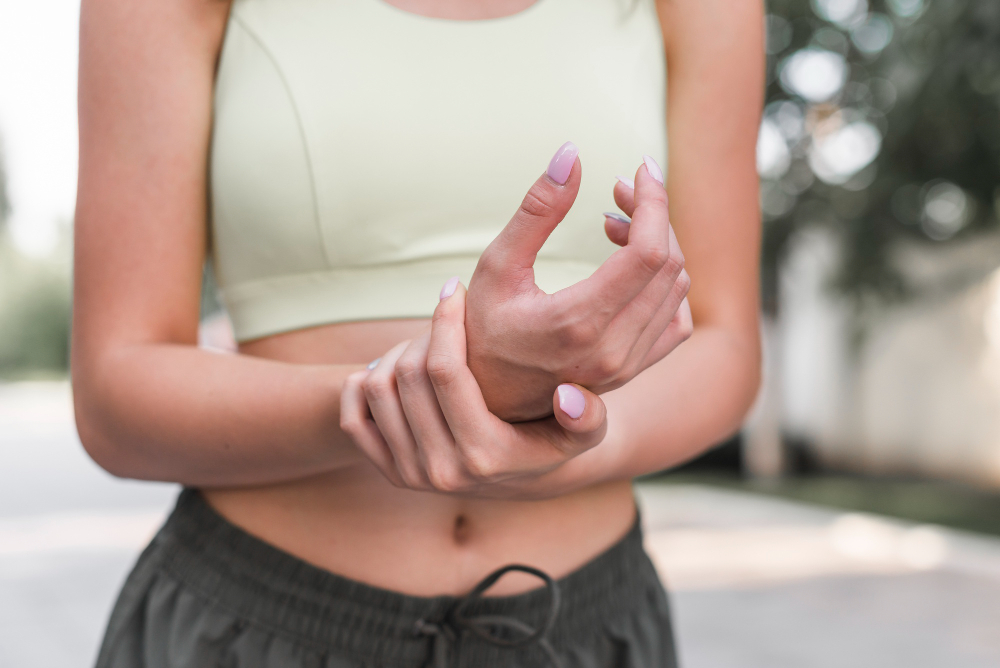Joint pain can be a real aggravation, especially when it limits your ability to move and enjoy everyday activities. If you’re experiencing aches and stiffness, particularly in your knees, hips, or hands, you might be wondering if osteoarthritis (OA) could be the culprit. But what exactly is it, and what can you do about it?
This article dives deep into the world of osteoarthritis, explaining what it is, what causes it, and the telltale signs to watch out for. We’ll also explore how to manage the pain and keep your joints moving smoothly. So, whether you’re looking for information or hoping to find relief, keep reading to learn more about osteoarthritis and how to take charge of your joint health!
What is Osteoarthritis?
Osteoarthritis (OA) is the most common form of arthritis in the UK, affecting 10 million people. It’s a degenerative joint disease, meaning it causes gradual wear and tear of the cartilage within your joints. Cartilage is a smooth, rubbery tissue that cushions the ends of your bones and allows for pain-free movement.
In healthy joints, cartilage acts like a shock absorber, preventing the bones from grinding together. However, with osteoarthritis, this cartilage breaks down over time, leading to friction between bones (causing pain, stiffness, and inflammation in the affected joint) and the formation of bone spurs; these are bony growths that can develop around the joint, further restricting movement and causing discomfort.
What causes Osteoarthritis?
We’ve established that osteoarthritis is all about wear and tear on the joints. But what exactly causes this breakdown? Is it simply a matter of getting older, or are there other factors at play? Well, there’s a few different causes of osteoarthritis:
- Age: Osteoarthritis is more common as we get older, due to the natural wear and tear on our joints.
- Weight: Carrying excess weight puts extra strain on your joints, particularly weight-bearing joints like the knees and hips.
- Previous injuries: Joint injuries, such as fractures, ligament tears, or meniscus damage, can increase your risk of developing osteoarthritis later in life.
- Overuse: Repetitive strain on a particular joint, common in certain occupations or sports, can contribute to osteoarthritis.
- Family history: Having a close relative with osteoarthritis slightly increases your risk.
Symptoms of Osteoarthritis
Osteoarthritis presents its arrival through subtle changes in your joints. Those occasional twinges after a long day might become more frequent, or the morning stiffness that used to fade quickly could linger. While pain is a common symptom of OA, it’s not the only one.
There are some telltale signs of osteoarthritis that can help you recognise the early warnings your body might be sending. By understanding these symptoms, you can take proactive steps towards seeking a diagnosis and managing your condition.
- Joint pain: This is usually worse during activity or at the end of the day and may improve with rest.
- Stiffness: The joint may feel stiff, particularly in the morning or after periods of inactivity.
- Reduced range of motion: You may find it difficult to move the joint through its full range of motion.
- Grating or grinding sensation: You might feel a grating or grinding sensation when you move the affected joint.
- Swelling: In some cases, the joint may become swollen and tender.
Does Osteoarthritis spread?
Osteoarthritis is not contagious and cannot spread from one joint to another. However, it’s possible to develop osteoarthritis in multiple joints at the same time.
Osteoarthritis pain
Osteoarthritis pain can be a significant concern, impacting daily activities and quality of life. While there’s no cure for osteoarthritis, there are effective treatments available to manage pain and improve joint function. These include:
- Osteopathy: Osteopathic treatment can help improve joint mobility, reduce pain, and promote healing.
- Exercise: Regular exercise strengthens the muscles around the joint, improves flexibility, and reduces pain.
- Weight management: Maintaining a healthy weight reduces stress on your joints and can significantly improve symptoms.
- Pain medication: Over-the-counter pain relievers such as paracetamol or ibuprofen can help manage pain.
- Injections: In some cases, steroid injections or hyaluronic acid injections may be used to reduce inflammation and pain.
Osteoarthritis may be a common condition, but it doesn’t have to control your life. By understanding the causes and symptoms of OA, you can become an active participant in managing your joint health. Early diagnosis and intervention are key to minimising pain and maintaining your mobility!
Here at Carl Todd Clinics, we’re dedicated to helping you navigate osteoarthritis. Our osteopaths can provide a comprehensive assessment, recommend personalised treatment plans, and guide you on a path to improved joint function and a better quality of life.





